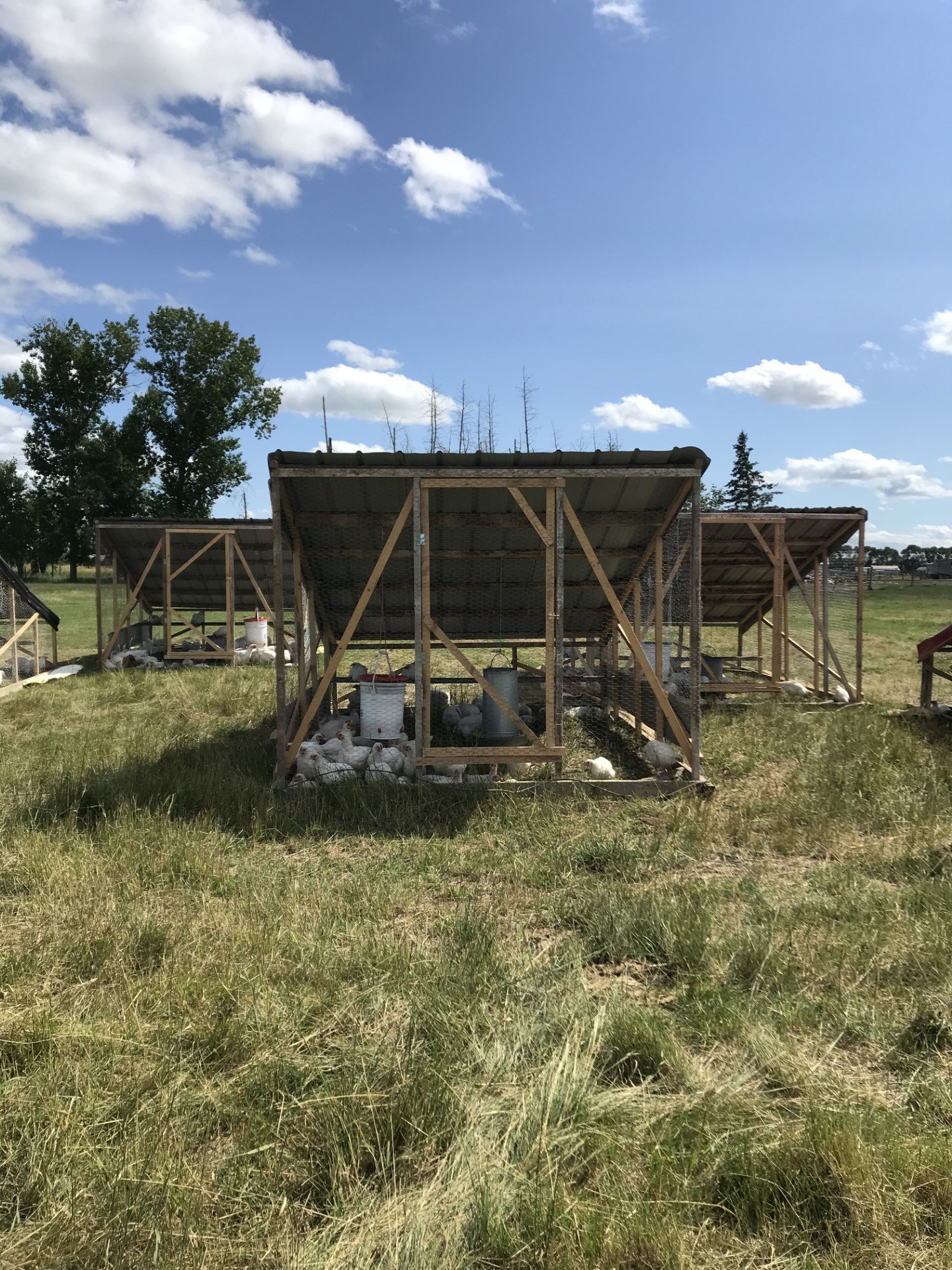our chicken...
Mid-May is when our chicks arrive on our farm. They arrive one-day-old in cardboard containers that contain 100 little yellow fluff balls. Chick arrival is always an overdose of cuteness. The chicks are housed in a brooder room that is kept warm with heat lamps and space heaters - chicks need to be kept at 30 C for their first week and their space has to be free from cold drafts. They have straw bedding that gets refreshed daily and continuous access to food and water. They are placed in cardboard rings for the first week so they cannot pile up on each other in corners (which they have been known to do).
As the chicks grow, we expand their cardboard rings to give them more room to exercise and run around. At about 2 weeks they start to run as fast as they can across the floor, flapping their wings. We also regularly decrease the temperature in their space, preparing them for the transition to life outside. They begin to lose their fluff around 2 weeks of age and begin to grow their adult feathers. They also lose their cuteness at this point. When they are 3 weeks old, we start the transition to outside life by letting them out of their barn during the day-time and return them at night. We love watching them scratch around in the dirt and explore the outside area on their first day out, they are so excited and happy.
At one month of age, they are no longer chicks and have developed most of their feathers and are ready to live outside 24/7. We transport them to “chicken tractors” which are open bottom structures that allow them access to grass and dirt that are moved daily to give them access to fresh ground. We previously had been raising them on a large open pasture, but we encountered too much avian predation and have switched to these tractors, which put a roof over their heads, protecting them from these predators, as well as providing them shade and rain protection.
A birds’ natural diet includes grains, so chickens cannot thrive on a grass-only diet. We provide them with a grain ration in addition to the grass and bugs they get from the pasture. Our feed usually consists of oats, peas and hemp screenings, although we have included other grains that we have come across at times such as wheat, flax and barley. It is more often than not grain grown on our farm and is milled on site. We are committed to never including GMO grains in our ration.
Usually by the beginning of August the chickens have reached their desired weight - this is a longer time period to grow a chicken compared to a conventional operation, but we believe growing them slower lends to a more flavourful bird. We process our whole birds on farm, and those getting cut for pieces go to a provincially inspected facility in Niverville. We’ve been using this facility for years and enjoy the finished product we deliver to you.
